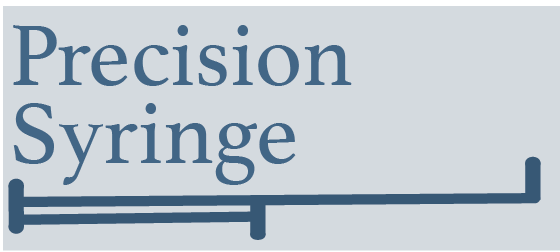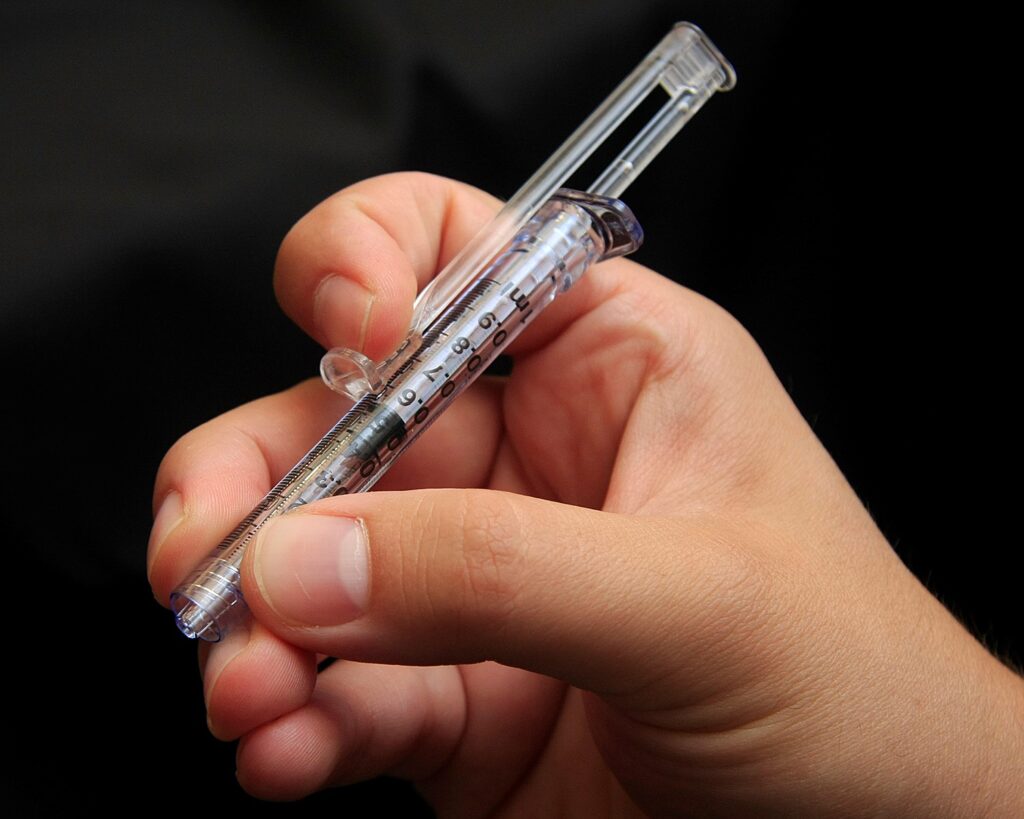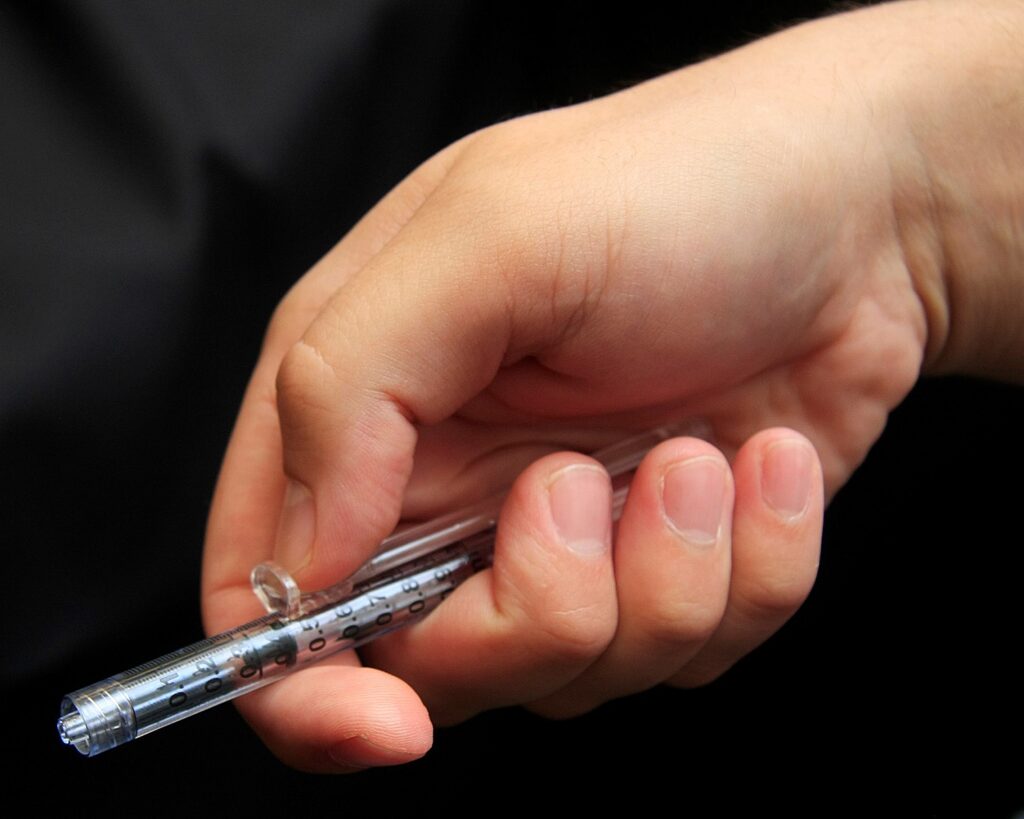
For our April Member Spotlight, we talked to Adrian Blake, CEO of Precision Syringe, a company set up to commercialize the Suh Precision Syringe, invented by a team from the University of Nebraska Medical Center and led by Dr. Donny Suh.
Tell us about Precision Syringe.
Precision Syringe is a company set up to commercialize the Suh Precision Syringe, invented by a team from UNMC and led by Dr. Donny Suh, who now is Chief of Pediatric Ophthalmology and Strabismus at University of California Irvine. The syringe allows anyone to give a precise injection, even in very sensitive use cases, and is designed to be operated with the index finger rather than the thumb.
How many employees on the Precision Syringe team?
Precision Syringe has only two employees, Dr. Suh and me, but we work in close alignment with people across the University of Nebraska Medical Center, UNeTech, and UNeMed.
How was the Suh Precision Syringe developed?
Syringe technology hasn’t changed much in the last 100 years. While new materials have been introduced, and syringes of many different sizes are now available, they all operate on largely the same model— the user depresses a plunger with their thumb to inject and uses two hands to aspirate. Lather, rinse, repeat. Dr Suh and his team were focused on developing a tool for eye surgery on premature babies. As you can imagine, in that case, it’s very easy to inject too much or too little of a medication, and that can be extremely dangerous. The team decided to find a better way to deliver medication, and they have succeeded.


What are the benefits of the Suh Precision Syringe?
The syringe is much easier to use, for a few reasons.
First, the muscles in the index finger are much finer and delicate than the muscles in the thumb—human beings are designed a certain way, and we are taking advantage of that. Think about how a preschooler writes with a crayon vs. how an older child writes with a pencil. A pencil grip allows much better control—not only where the tip of the pencil goes, but how hard the pencil is being pressed. A syringe works the same way. Once you start using a pencil grip, you can be more precise with where you are placing the syringe and more precise with the pressure you are applying to the plunger.
Second, by placing the tip of the plunger by the side of the barrel, not sticking out past the end of the barrel, the user can simultaneously look at the injection point, the markings on the barrel and how far the plunger is moving. Using a traditional syringe, the user has to choose between looking at the needle point (where it penetrates the skin), the barrel (where the user can see the volume remaining in the syringe), or the far end of the syringe (where the thumb is pressing down). It’s asking a lot to focus on all three points at the same time.
Finally, and people don’t think about this a lot, there are many cases where the process begins by aspirating—drawing liquid into the syringe, rather than pushing it out. A traditional syringe requires two hands to aspirate. This is not a problem in many cases, but there are other use cases where one-handed aspiration is faster and safer. It’s a true one-handed syringe. And testing shows that it works. You can read all about it in Clinical Ophthalmology, but testing has shown that the Suh Precision Syringe has significantly less forward-retraction movement when injecting as compared to a conventional syringe. Better needle control leads to better outcomes.
Who is the syringe designed for?
The team designed the syringe primarily for eye surgery, particularly pediatric cases. However, the benefits of the syringe apply to many other specialties—really any clinical situation where precision in injection is important.
Where do you expect it to be used first?
Pediatric Ophthalmology is a primary target. We also got early and consistent interest from the Dermatological specialties. In particular it’s an excellent fit for Mohs, which demands very tight tolerances due to the nature of the technique. It’s also an excellent fit for fillers and botulinum applications like Botox. We have also received strong demand from Dentistry. But like any good startup, we are focusing on one or two use cases and not trying to fit it to everyone’s needs at this early stage.
When will the syringe be available to patients?
We are in discussions with a very large medical technology company, and hope to have an announcement later this year.
What makes Nebraska a great place to establish and grow as a startup?
Three things come together in particular for a medical technology company. First of all, the density of talent. UNMC is a treasure, and a terrific source of startup ideas and high-end practitioners. You have great people working on difficult problems, and that usually yields important insights. Second, it’s a low-cost and low-pressure environment, especially compared to California, Texas, Massachusetts and New York (and I’ve lived in three of them). We can stick to our knitting here, focus on the problem we solve, and not worry about startup theatre. A low burn rate is incredibly valuable. And nobody cares which restaurant you were seen at. It’s all about the work. Third, it’s a community that unambiguously wants to see local companies succeed. We all want Nebraska organizations to succeed, from founders and funders to service providers and target customers. It’s something more tangible than just boosterism—it’s a shared commitment to being practical. We all seem to share a common view that startups are good for Nebraska, and that the way to help them is through being practical, not hype.
Advice for anyone exploring a new business idea?
Talk to target customers early and often. Make sure you understand how they define the problem you’re solving, not how you and your partners define the problem.
What else would you like to include?
A big thank you to UNeTech and UNeMed for eliminating barriers and providing consistent practical support.
